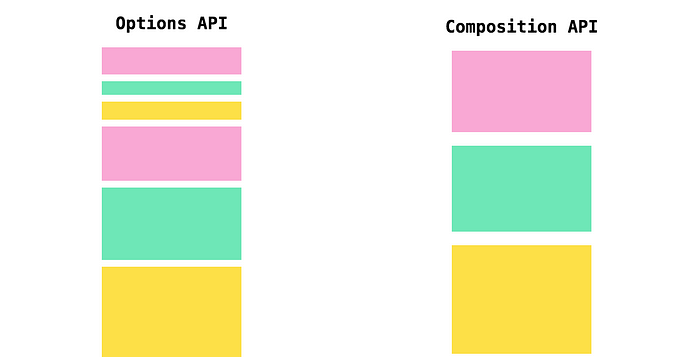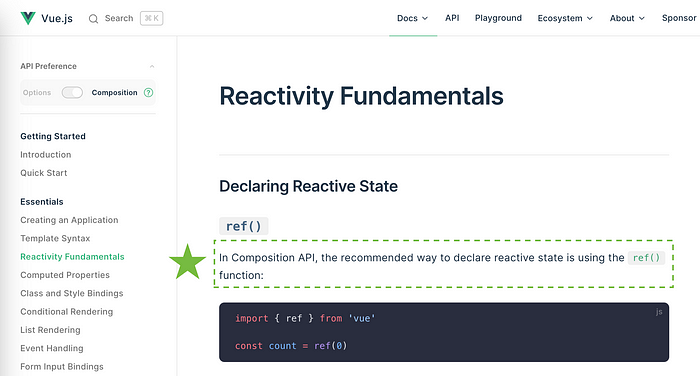Ref vs. Reactive - Pick one, Kill the Other
TLDR: Balancing ref and reactive in Vue’s Composition API can be complex. Choosing one over the other could simplify development, with a leaning towards ref for future adoption.
Reactive data declaration is arguably the most complex part of the Composition API. Choosing between ref and reactive and handling each differently is necessary because reactive seamlessly works with complex types, while ref wraps the variable in a new object and requires .value to access the value.
Adding to the confusion, when using ref in templates, the values are automatically unwrapped, and .value can be omitted. However, this unwrapping only applies to the top-level properties.
Read more about why both
refandreactiveare needed.
Another issue with reactive is that reactivity is lost after a reassignment.
<script setup>
import { ref, reactive } from "vue";
let response = reactive();
let loading = ref(false);
async function fetchData() {
loading.value = true;
response = await apiCall(); // this assignment breaks reactivity
loading.value = false;
}
fetchData();
</script>
Predicting which will be widely adopted long-term is challenging, but which is the best?
The Case for Reactive
Using reactive can follow the Options API paradigm by utilizing an object to hold all state.
<script setup>
import { reactive } from "vue";
const state = reactive({
response: [],
loading: false
});
async function fetchData() {
state.loading = true;
state.response = await apiCall();
state.loading = false;
}
fetchData();
</script>
This approach may seem acceptable in a simplified example, but in complex real-world components, one of the most important benefits of the Composition API is lost: grouping related functionality together.

Combining this advantage with code abstraction through composables can significantly simplify components and make them more comprehensible. Grouping unrelated variables together is not a wise choice.
The Case for Ref
Using ref for all purposes, with the important note that complex types require the use of the .value suffix to read or update a variable’s content, can also be effective.
<script setup>
import { ref } from "vue";
const response = ref([]);
const loading = ref(false);
async function fetchData() {
loading.value = true;
response.value = await apiCall();
loading.value = false;
}
fetchData();
</script>
Adopting a single method for declaring data can significantly reduce mental overhead. While forgetting to use .value is sometimes unavoidable, Volar is always there to remind us.
Using ref is actually the recommended way to declare reactive state in the official Vue documentation.

Conclusion
Predicting the future is never easy, but having one approach for handling variables could reduce the mental overhead, allowing more focus on delivering actual business value. Of course, the potential for some yet-to-exist experimental feature to offer better ergonomics and replace both always exists. An example of this was the reactivity transform, which ultimately led to more confusion than clarity and was therefore dropped.
The future is unpredictable, but if placing a bet, the money would be on ref being the only way of declaring reactive state in the near future.